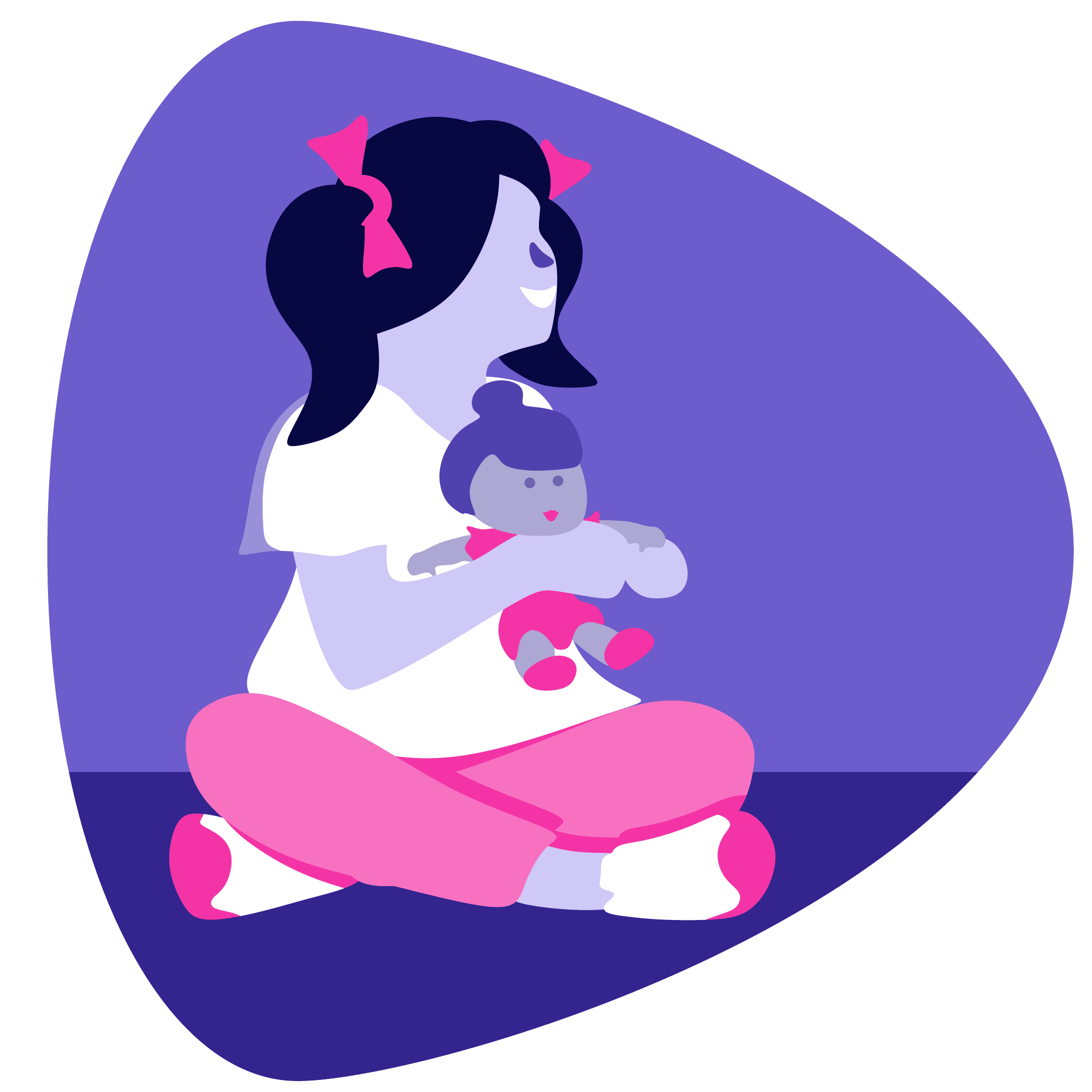Thank you for following along the journey through common pediatric care disorders and treatments! This is our fourth and final post in our series on pediatric behavioral health conditions. For more, visit our posts on pediatric stress and trauma, pediatric depression, and pediatric anxiety.
In this post, we’ll discuss the prevalence and risk factors surrounding pediatric eating disorders, screening challenges, and treatment for eating disorders in primary care — while considering additional challenges that have popped up during the COVID-19 pandemic. Because you’ll probably see Anorexia Nervosa and Bulimia Nervosa most often in pediatric care, we’ll spend more time on those two.
We hope this guide will empower you to understand and treat this increasingly prevalent pediatric health condition.
Anorexia Nervosa is a battle against body and mind
Anorexia Nervosa (AN) is a tricky disorder that’s not just physical, but a combination of psychological characteristics leading to physical changes. Common characteristics associated with Anorexia Nervosa include:
- Lower body weights than minimally expected (less than 85% of expected BMI)
- Intense fear of gaining weight
- Persistent behavior that interferes with weight gain
- Undue influence by body weight or shape
- Failure to recognize low body weight
- Secret exercising and/or compulsion to stand or move
- Baggy clothes and complaints of being cold
Look out for AN in children who participate in activities where weight or appearance plays a role and picky eaters or children significantly affected by societal pressure.
As always, keep an eye out for comorbidities as AN is comorbid with at least one other psychiatric disorder in 55.2% of cases.
Restricting type and binge eating/purging type are the two subtypes of Anorexia Nervosa, though binging and purging is less likely in children than adults:
- The restricting type is defined by restricted food consumption, and you’ll see symptoms such as fasting or avoiding “risk” foods.
- The binge/purging type includes children who demonstrate both binging and purging symptoms and are severely underweight.
The good news is that prognosis for teens with Anorexia Nervosa is more promising than the same diagnosis for adults. If you can catch and treat Anorexia Nervosa in a patient’s childhood years, you can take the necessary steps to improve their development.
Screening and treating Anorexia Nervosa is a family affair
Screening for AN is tough. Children may keep their eating disorder a secret by including attempting to pad weight by putting objects in their pockets during weight checks, drinking excessive water prior to appointments, or explaining weight loss through a medical illness. And they may deny the psychological characteristics of AN.
For this reason, an honest parent/child rapport is essential for diagnosing children with AN. You’ll need to advise parents about symptoms to watch throughout the screening process, especially if they note any unexpected weight loss or failure to gain expected weight. Also, be sure to require a medical workup to understand the physical symptoms children may be experiencing and schedule frequent follow-up visits.
Remember that family relationships can be essential to effective treatment. One of the most commonly used treatment models, the Maudsley Model, includes intensive family therapy to educate and empower parents. It’s an outpatient model and includes programs that meet regularly for 6-12 weeks. It has proven successful in weight restoring children, who in turn learn increased autonomy over time.
For children who don’t have access to family therapy, we’d recommend a model focused on individual therapy to restore autonomy over eating.
Bulimia Nervosa is another secret battle
Anorexia Nervosa goes hand in hand with Bulimia Nervosa (BN). Approximately 60% of patients diagnosed with AN develop BN, and BN often develops at 14-22 years of age. As with AN, Bulimia Nervosa (BN) can be a secret battle, and patients can have BN symptoms for up to five years before seeking treatment. The good news is that 50% of patients are symptom-free 5-10 years after receiving treatment.
BN patients are often within the normal expected weight range, making it more challenging to see the physical characteristics of the condition. However, teens with BN may be secretive and note difficulty with interpersonal relationships, and males with BN may overexercise or use steroids.
Keep on the lookout for BN as it’s relatively prevalent — 1-2% of adolescent females and 0.5% of males meet DSM-5 criteria for BN.
Of course, differential diagnoses also exist, so be wary as you diagnose patients with BN. What may appear as Bulimia Nervosa could be the Anorexia Nervosa binge/purge subtype, Binge Eating Disorder (BED), or other conditions.
Family and social factors are risk factors for Bulimia Nervosa
Family factors such as PTSD or perfectionistic temperaments are major risk factors for Bulimia Nervosa. These risk factors are compounded with dieting and social pressures to be thin, and when combined, they can create the feelings of guilt and shame we associate with BN.
Remember comorbidities as you’re investigating factors. One study showed lifetime psychiatric comorbidity of 88%, and most teens had at least one comorbid psychiatric illness with BN.
As a provider screening for Bulimia Nervosa, you must stay vigilant
As with Anorexia Nervosa, you’ll face significant challenges screening for Bulimia Nervosa. Adolescents with BN will often want to keep their eating disorder a secret and be ashamed of binging and purging symptoms. Because weight is often within the normal range, physical characteristics are less obvious than AN. Children with AN may not be aware of their feelings or able to verbalize shame, and they may not even understand their behavior is abnormal.
As with AN, patients will often deny the psychological aspects of BN, and you’ll have to stay suspicious throughout screening to understand the full picture.
Treating Bulimia Nervosa is a family affair
Research on both therapy and medication for Bulimia Nervosa is still ongoing. The two therapy types for BN include Family-Based Treatment (FBT) and Dialectical Behavioral Therapy (DBT). As with AN, family-based Maudsley therapy is the most effective. Educating the entire family system also alleviates behaviors that will encourage binging and purging. DBT should also be integrated into any therapy for eating disorders to help cope with stress symptoms.
COVID-19 is making eating disorders worse
During the first lockdown period in spring 2020, grocery shopping, doctor visits, and social support systems were interrupted, exacerbating eating disorders.
In some cases, children who liked the sense of control that came with a scheduled routine turned to controlled, disordered eating to cope with the uncertainty. Social distancing made hiding restrictive behaviors and weight loss easier for children who wanted to keep their behaviors secret. On top of this, virtual appointments have made it more difficult to assess vital signs, weights, and labs, causing eating disorder screenings to be less accurate.
While telehealth, virtual nutrition coaching, and more have led to some creative solutions to address eating disorders, the reality is that COVID-19 is making eating disorders more prevalent and more difficult to treat as a whole.
Keep up the great work!
We understand eating disorders are challenging to diagnose and treat, and the societal pressure on appearances makes your job as a provider even tougher. Know that as you’re supporting children and families, you give them the best chance to overcome their eating disorders and live fulfilling lives.
Research on eating disorders is ongoing, so be sure to follow the most updated guidance. For now, here are a few resources we recommend:
- Practice Parameters for the Assessment and Treatment of Children and Adolescents with Eating disorders, 2015
- Multi-Service Eating Disorder Association (MEDA)
- National Eating Disorders Association (NEDA): helpline to call/text for support, resources, treatment options, Crisis Text Line
As always, Iris Telehealth is here as a resource for providers who need support. If your organization feels the pressure of increased numbers of patients experiencing pediatric eating disorders, contact us today.

